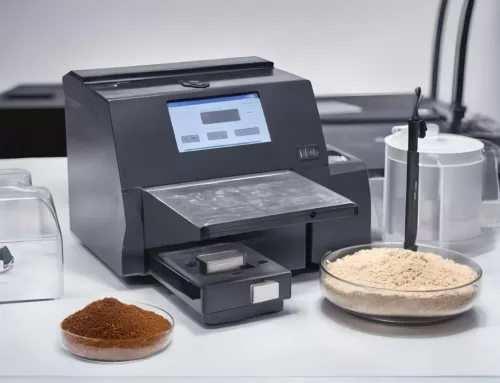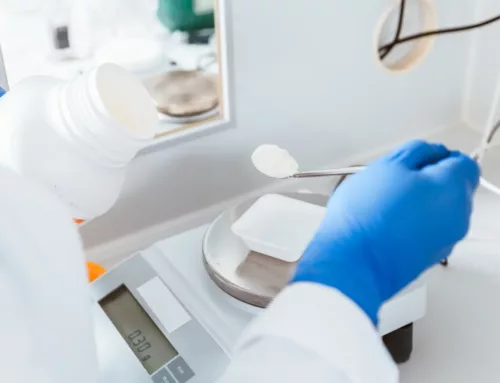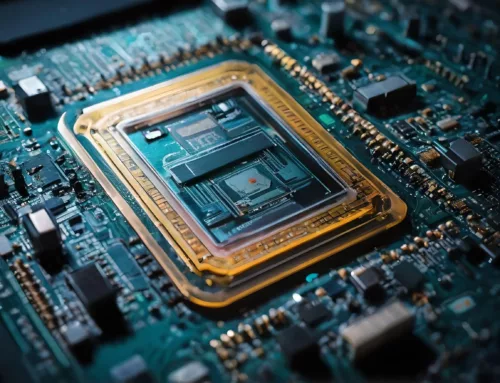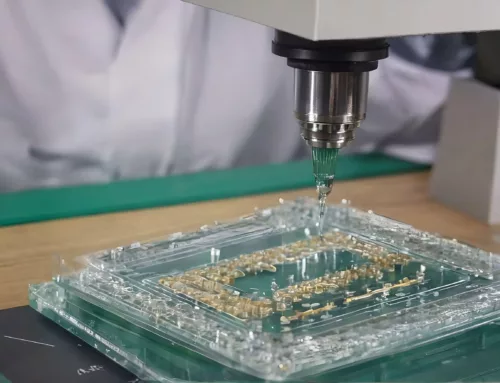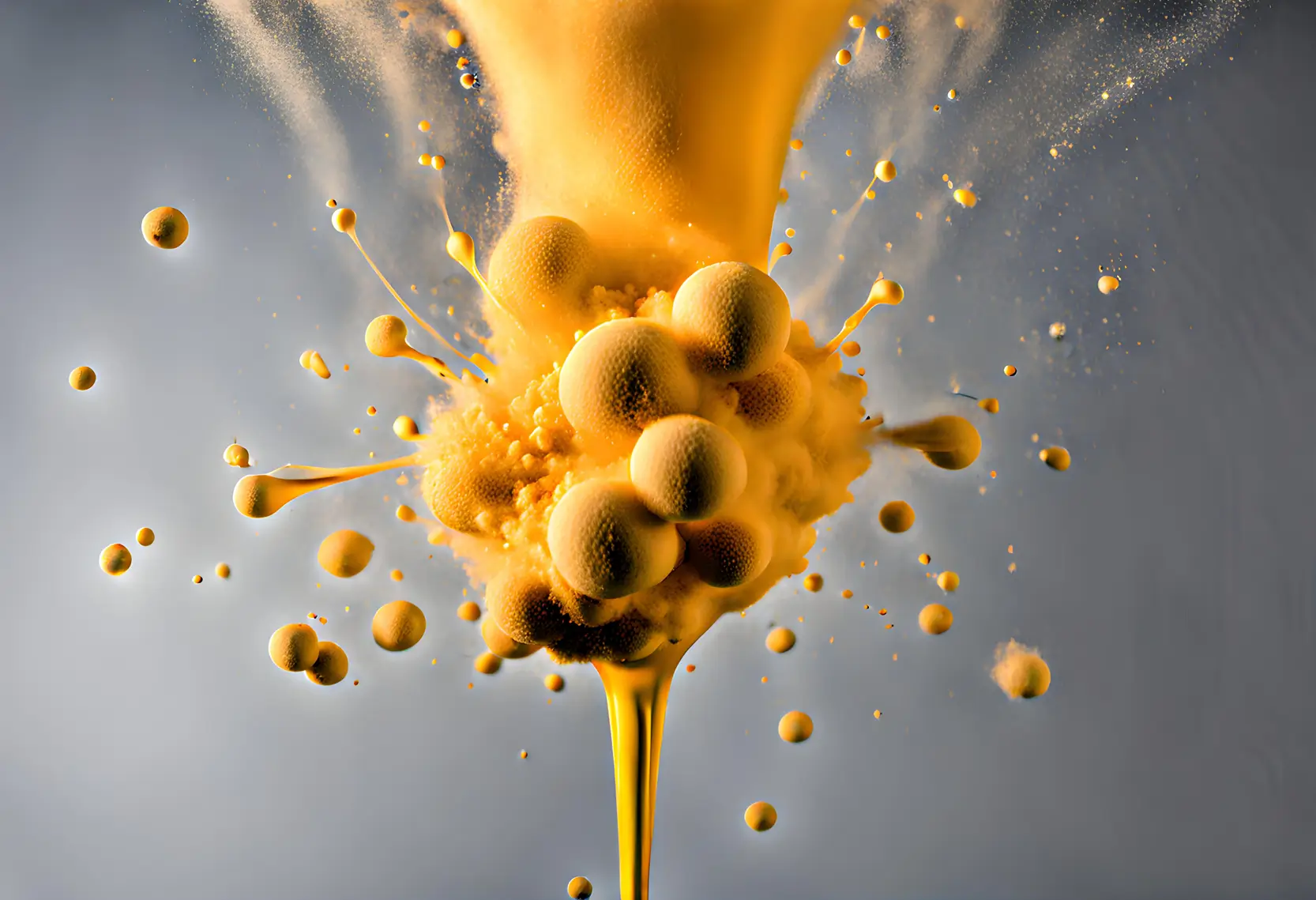
Powder dispersion, an integral process in various industrial sectors, has had a remarkable influence on the landscape of manufacturing and product development. While the exact origins of its use and the terminology’s formalization remain cloaked in the mists of history, there’s no denying the importance and extensive reach of powder dispersion’s impact on present industries. From pharmaceuticals and paints to the sectors of food and cosmetics, this intricate process, facilitating the blending of fine powders with liquids to create stable suspensions and solutions, stands as a cornerstone of consistency and quality in an array of products.
Dispersion is a process involving breaking down agglomerates of particles into individual units and evenly distributing them within a liquid medium. This plays a pivotal role in numerous powder processing and laboratory testing applications. The quality of dispersion significantly influences the properties of the final product. The three primary types of dispersion are namely mechanical dispersion, ultrasonic dispersion, and high-shear mixing. Each has its own drawbacks, and their applicability in specific scenarios.
Mechanisms of Dispersion
At the heart of powder dispersion lie intricate mechanisms that orchestrate the transformation of clumped particles into harmoniously suspended units within a liquid medium. These mechanisms can be defined into two fundamental processes, detachment and stabilization.
Detachment is the initial act of liberation, where the unyielding bonds that tether particles together within
agglomerates are severed. This phase is important in achieving uniform dispersion. It’s a cascade of mechanical forces at play, where particles within agglomerates experience liberation from their confining embrace. Impact, attrition, and shear forces show themselves as the instigators where impact forces create a dramatic break as particles collide and attrition effects shred agglomerates into finer constituents. Where shear forces work their magic in
the form of frictional separation. These mechanical elements serve as the foundation for the next stage.
With the liberation of the particles accomplished, the dispersion process is far from complete.
The need for equilibrium is needed and accomplished only by the process of stabilization. Stabilization is the process of maintaining the achieved dispersion and preventing the dispersed particles from succumbing to their intrinsic
desire to re-agglomerate again. Here, the dispersion is aided by electrostatic repulsion, steric repulsion, and solvation.
Electrostatic repulsion plays a crucial role as particles carry electric charges that can either attract or repel each other. Particles with similar charges vigorously repel each other, generating a force that maintains their spatial separation. The Steric repulsion involves the presence of molecules or polymers that act as
protective shields, creating a barrier that hinders particles from getting too close to each other. This can be likened to the concept of personal space on a microscopic scale, where these molecular “bodyguards” maintain a respectful distance, thereby preventing particle aggregation.
This mechanism is crucial in maintaining stable dispersion by effectively guarding against undesired interactions.
Finally, solvation is the fundamental process in which particles are enveloped by a solvent, resulting in a liquid environment that efficiently maintains their spatial separation. This phenomenon involves the particles being encased within the solute,
thereby safeguarding their distinct identities. Solvation plays a pivotal role in averting particle agglomeration by establishing a protective liquid boundary. These three main stabilizations are the guardians of the dispersion’s balance, ensuring that particles
remain suspended in liquid form, and avoid the urge of re-agglomeration. Together, detachment and stabilization compose the start that turns clumps into finely tuned particles, delivering the promise of uniformity and quality in the process of powder dispersion.
Factors Influencing Dispersion Quality
The quality of powder dispersion is intricately connected with the fundamental properties of both the powder and the liquid medium involved. The properties of the powder, such as particle size and size distribution, are crucial determinants. Smaller particle sizes tend to disperse more easily, as their reduced mass promotes better interaction with the liquid medium. while a narrow size distribution enhances
uniformity in dispersion, reducing the likelihood of agglomeration. Particle shape also plays an important role. Irregularly shaped particles may have more surface area for interactions, therefore impacting dispersion differently than well-defined, spherical particles. Surface chemistry is another critical factor, controlling the attractive or repulsive forces between particles, influencing their tendency to agglomerate or disperse, and finally hydrophobicity, or the affinity of
particles for water. This can either hinder or promote dispersion, depending on the specific application. Hydrophobic particles may require additional surface modification to achieve stable dispersion in aqueous media.
On the liquid side, properties like viscosity, surface tension, and dielectric constant significantly influence dispersion. Higher viscosity can impede the flow of particles, making dispersion more challenging. Lower surface tension promotes
wetting, aiding in the separation of particles, while the dielectric constant influences the electrostatic forces between particles. The processing parameters, including dispersion time, energy input, and temperature, are essential variables. Longer dispersion times allow for more complete separation, while increased energy input can overcome agglomeration forces. Temperature affects the viscosity of the liquid, impacting the ease of particle movement and separation.
Mechanical Dispersion
Mechanical dispersion is the most commonly used method and involves applying mechanical energy to disintegrate agglomerates. This is accomplished using various equipment, such as ball mills, attritor mills, colloid mills, and high-speed mixers. Ball mills are rotating cylinders containing balls of different sizes. These are effective at dispersing coarse and
agglomerated particles but can be slow and energy-intensive. Attritor mills, similar to ball mills, use smaller balls and higher rotation speeds, making them even more effective at dispersing agglomerated particles but potentially slower and more energy-intensive. Colloid mills excel at dispersing nanoparticles and submicron particles. They employ a high-speed rotor to generate
intense shear forces, making them relatively compact and efficient but potentially costly. High-speed mixers use a rotating impeller to create high shear forces that break down agglomerates. They are highly efficient at dispersing agglomerated particles and suitable for producing large volumes of dispersed material, albeit potentially expensive and potentially damaging to delicate particles.
Ultrasonic Dispersion
Ultrasonic dispersion harnesses high-frequency sound waves to disintegrate agglomerates. These sound waves generate cavitation bubbles that collapse with great force, producing high shear stresses that effectively break apart agglomerates. Ultrasonic dispersion is a highly efficient method for dispersing nanoparticles and agglomerated particles. Additionally, it is a non-contact method, preserving the integrity of the particles. However, it may not be suitable for all powder types,
and it can be relatively expensive.
High-Shear Mixing
High-shear mixing employs a rotor-stator system to generate high shear stresses, disassembling agglomerates. This system comprises a rapidly rotating rotor and a stationary stator, and it efficiently processes powder and liquid mixtures. High-shear mixing offers a continuous dispersion process, making it ideal for producing large volumes of dispersed material. However, like ultrasonic dispersion, it
may not be suitable for all powder types, and it can also be costly.
Choosing the Right Dispersion Method
Selecting the appropriate dispersion method falls down to the specific application and the characteristics of the powder and liquid involved. Some general guidelines to consider are to opt for a ball mill, attritor mill, or high-speed mixer for coarse and agglomerated particles. When dealing with nanoparticles and submicron particles in large volumes of
dispersed material, high-shear mixers, colloid mills, or ultrasonic dispersers can be other valuable tools to consider.
Laboratory Testing of Dispersion Quality
Laboratory testing is an indispensable aspect of assessing dispersion quality, exerting substantial influence on a multitude of applications in powder processing and laboratory testing.
From the production of paints, coatings, inks, ceramics, and polymers, to pharmaceuticals, the process of dispersion is fundamental in achieving
uniform particle and additive distribution within these materials. The evaluation of dispersion quality involves a suite of intricate laboratory tests. These include particle size analysis, a meticulous examination that scrutinizes the size distribution of dispersed particles, zeta potential measurement for quantifying the surface charge of the dispersed particles, and rheology measurements, which delve into the complex flow properties of the dispersed suspension.
The data derived from these laboratory tests is paramount for the optimization of dispersion processes. Ensuring the desired dispersion quality is achieved is of utmost importance, particularly in industries where product homogeneity is a critical factor for quality and performance. Furthermore, understanding the intricacies of dispersion is essential. This article has thoroughly explored the three primary types of dispersion: mechanical dispersion, ultrasonic dispersion, and high-shear mixing, providing an in-depth understanding of these techniques. Selecting the appropriate dispersion method hinges on the specific application and the unique characteristics of the powder and liquid medium. Laboratory testing, with its precision and detail, plays a pivotal role in upholding dispersion quality, ultimately enhancing the quality and performance of the final product.

